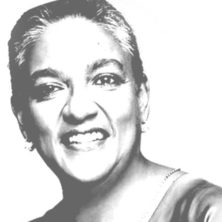Perspectives
Can Many Wrongs Help Us Get Things Right? Finding Comfort in the Margin of Error
Some people seek thrills by jumping out of airplanes. For Tracy and me, designing and launching CoreAlign has been the intellectual equivalent, fingers crossed that the parachute opens to guide us safely to our targeted landing. In any day’s work we bounce between aha moments of accord and concern that what sounds so right is the mere amplification of our own little echo chamber. What if, despite great intentions, our novel experiment only leads to more of the same? Who the hell do we, two West Coast academics, think we are to be doing this? And what is our plan B if we fall (and fail) hard and fast?
Doing things differently requires taking risky leaps – failure, humiliation and ridicule are potential parts of the package. Long is our list of possible mistakes: our analysis is off, our hypothesis for what’s needed incorrect, we’re not the right people to implement the plan, we will succeed locally but not bring the work to scale, others may hate what we say, and these are only the most obvious.
In Being Wrong: Adventures in the Margin of Error, Kathryn Schulz writes about how allowing ourselves to be wrong is the single greatest moral, intellectual and creative leap we can make. She describes how we love stories of being wrong because that is the path of self-discovery and heroism. That expecting one thing to happen and having another occur
instead is how we live our lives. This is the human story.
Schulz recommends that we “step outside of that tiny, terrified space of rightness and look around at each other and look out at the vastness and complexity and mystery of the universe and be able to say, ‘Wow, I don’t know. Maybe I’m wrong.’”
In fact, many of our initial assumptions for CoreAlign have proven wrong already. We started out seeking a space for more research and commentary on the nature and workings of the movement itself, a think tank for the field. But realized quickly that abstract theorizing without implementation would prove deeply frustrating and deadly dull for us. Informed theory and effective action must exist entwined. With our movement struggling to convey clearer aims and spiraling downward from political casualties, we don’t have the time for ideas alone.
Recognizing this, we backed up and took an honest look at the real gulfs and silos between our traditionally recognized sectors: reproductive health, reproductive rights and reproductive justice. We hypothesized that revitalizing our movement requires better alignment across these sectors. And so, we abandoned our original moniker, the Praxis Center to rename our work CoreAlign. We set for ourselves the goal of facilitating, through
difficult conversations, leadership training and fellowships, a revitalized movement moving together in the same direction.
However, once we tackled the data from our social network analysis and interviews, other doubts surfaced. Our analysis showed each sector working from the singular assumptions of its worldview – reproductive health embracing an intervention approach to reduce unintended pregnancy; reproductive rights seeking privacy and autonomy; and reproductive justice struggling against inequalities of power and privilege. As we traveled around the country (Oakland, New York, Washington DC, Boston, Atlanta, Chicago, Seattle, Los Angeles, Chapel Hill, Austin, Tucson) sharing our findings and hearing from friends and
allies our ideas changed yet again. We began thinking about building a network of people, committed to a shared vision, united by a common empowering narrative, and wearing organizational hats lightly to design and catalyze a 30 year plan for winning resources, rights and respect for all people to make their own sexual and reproductive decisions.
At one point, in the space of three months, we went from centering on women to including all people, from focusing on reproduction to erasing that artificial division between sex and reproduction, and from highlighting women as victims to promoting all people as heroes in their sexual and reproductive lives.
Our ideas have morphed at dizzying speeds, and there is no guarantee that we are any more correct now than we were two years ago when we began. If that means that we’ve stepped out of that “tiny, terrified space of rightness”, then we’re headed in the right direction. I would love it if CoreAlign proves to be a great moral, intellectual and creative leap forward, an adventure in the margin of error. Because only in launching from audacious heights, an admittedly scary space with no guarantee our chute opens, could we hope to land what we all so passionately want for ourselves in our sexual and reproductive lives.
